Arthropods


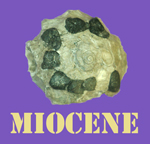

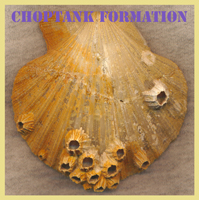
Barnacles, mostly
Arthropods |
 |
 |
 |
 |
 |
Barnacles, mostly |
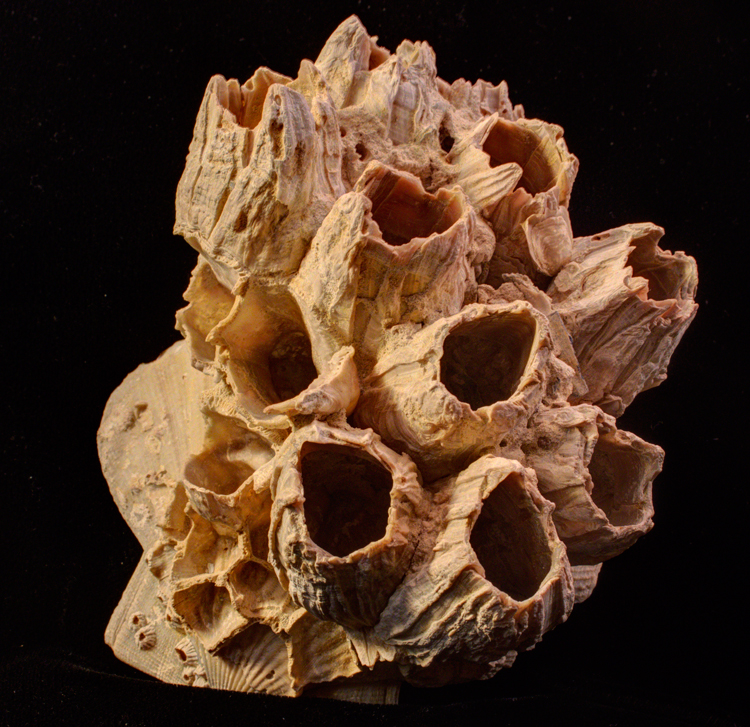  Balanus concavus Bronn |
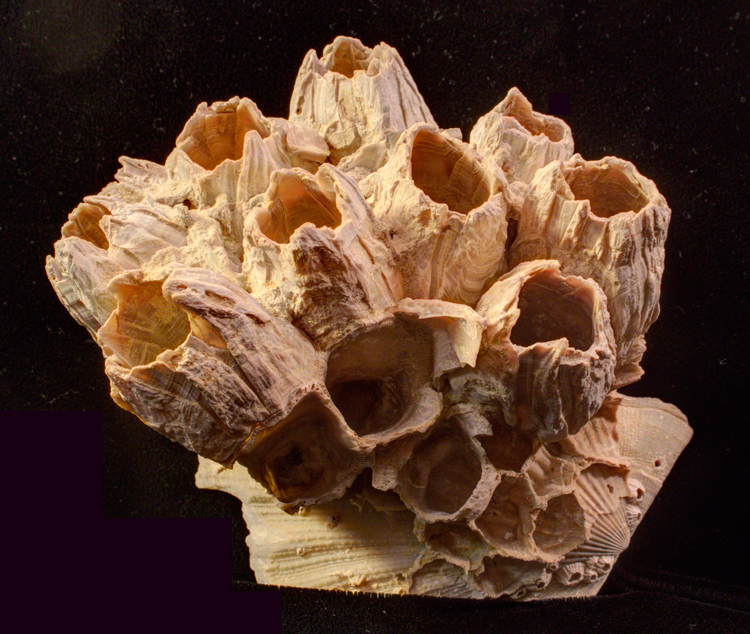  Balanus concavus Bronn |
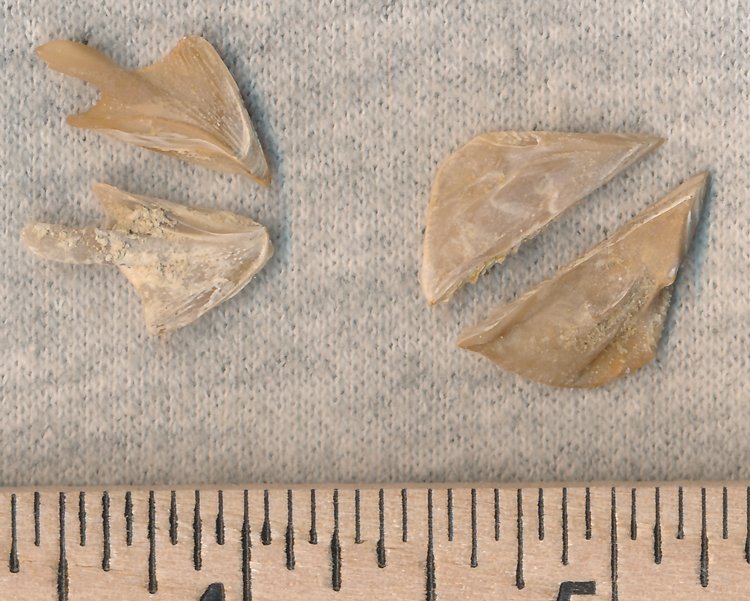  Balanus concavus Bronn These are the terga and scuta that form the operculum of a barnacle. This is the interior view. |
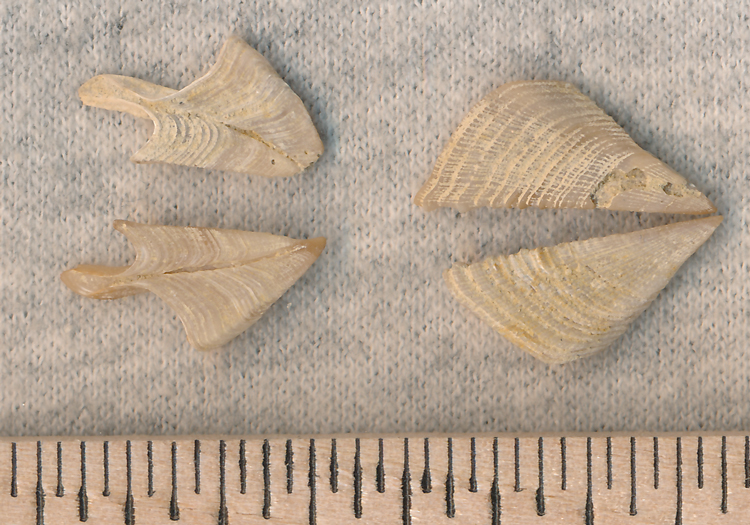  Balanus concavus Bronn These are the terga and scuta that form the operculum of a barnacle. This is the exterior view. |
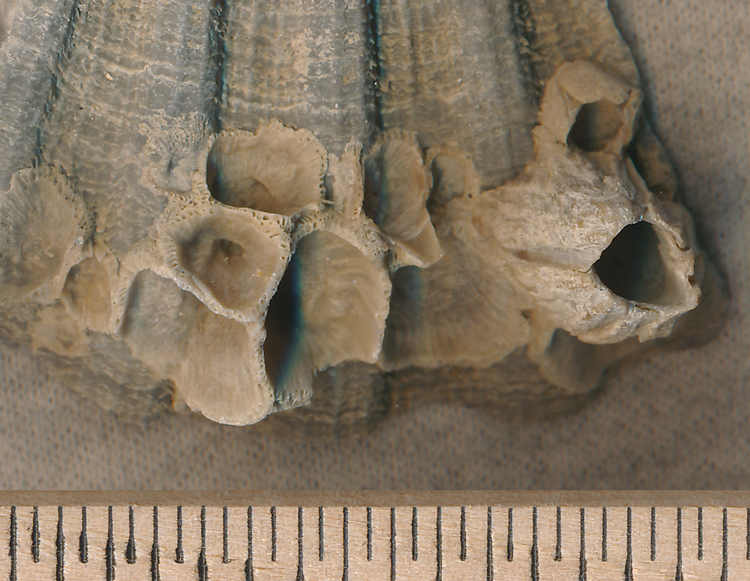  Balanus concavus Bronn Typically, only the lower plate remains on the supporting shell. |
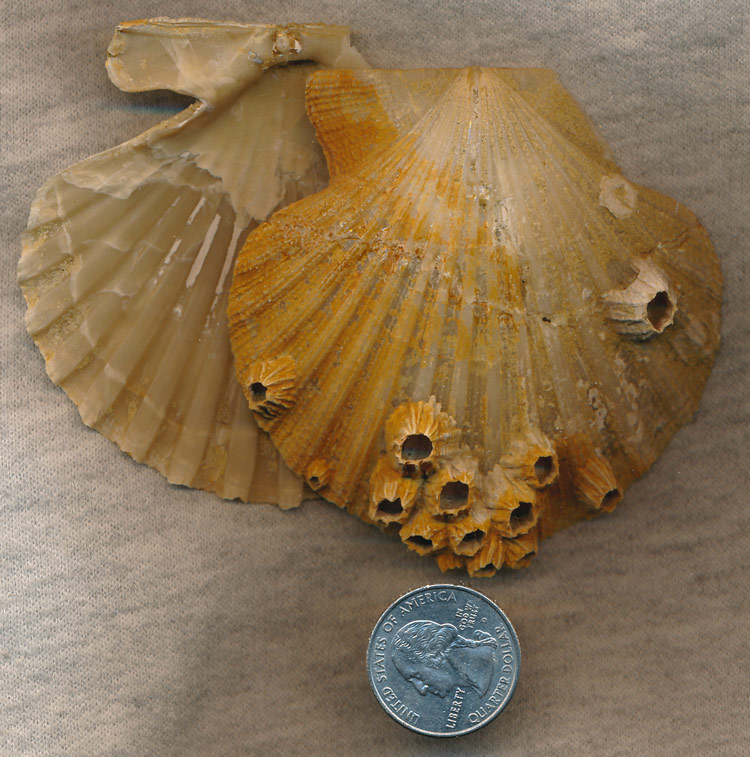  Balanus concavus Bronn A group of small individuals. |
There is only one species of barnacle described from the Miocene in Maryland, Balanus concavus. The species varies from tiny to large and plates are very common. Less common are complete individuals and groups. The two images on the left of one group show how the species varies in size. The large individuals overwhelm the small individuals visible in the first image on the shell in the lower left and in the second image on the lower, right on the supporting shell. As you can see, barnacle groups are most often found attached to scallop shells. Barnacles have an operculum that consist of four plates, two terga and two scuta. The terga and scuta on the right of the group were found inside the large individuals. The illustrations below shows the plates, scuta and terga:
|
|||||
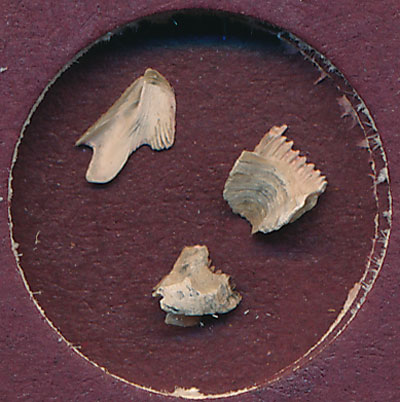  Balanus concavus Bronn In this image, the circle is 9/16 inch across. There are two plates and a terga here. |
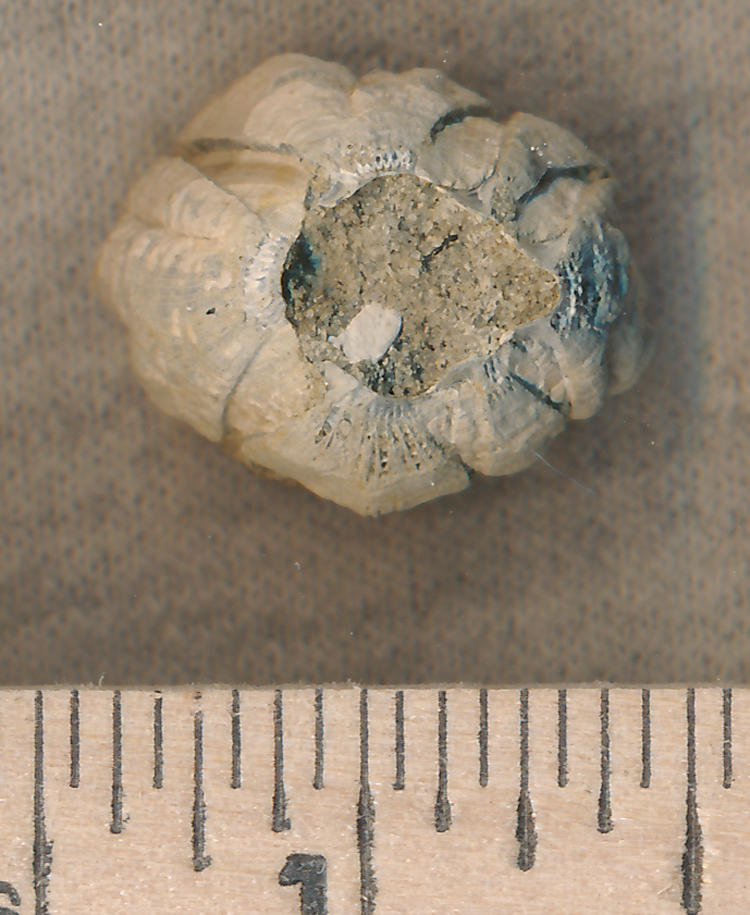  Balanus concavus Bronn Rarely, I find a whole barnacle not attached to a shell. |
||||